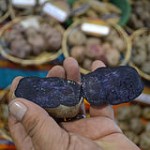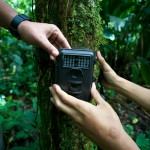
In ‘The Seeds Of Time,’ One Man’s Quest To Save Our Food Supply
NPR dedicates this article to the newly released documentary The Seeds Of Time, about an American who tries to save rare seeds which brings him in touch with the International Potato Center in Peru, among others.
Expand, not just extend, forestry moratorium
…an Indonesian researchers urges his government. “The forestry moratorium followed Indonesia’s commitment to curb carbon emissions up to 41 percent by 2020 under the Reducing Emissions from Deforestation and Forest Degradation (REDD+) mechanism. Considering the continuing forest loss despite the moratorium, it seems that stopping deforestation using a carbon perspective alone is ineffective,” writes Sugeng Budiharta in the Jakarta Post.
Can we save the rhino from poachers with a 3D printer?
…wonders The Guardian. Bioengineering startup Pembient aims to reduce demand for black-market rhino products by 3D-printing artificial horn – but wildlife groups remain sceptical.

Organic farming ‘benefits biodiversity’
…according to a study, it says in the BBC.
Celebrate International Day of Biological Diversity with The Great Nature Project
…created by the National Geographic to crowdsource photos that document biodiversity around the world, writes the Science Times. The magazine is asking people to register on the site for the project so they can share their findings. On 23rd May, the website indicated more than 458,000 photographs in the record.
An incredible image shows how powerful countries are buying up much of the world’s land
…titles the Washington Post, showing how China grows cabbages in the Democratic Republic of Congo, raise fish in Angola, or harvest sesame seeds, cashews and peanuts in Mozambique.
What makes Indian farmers kill themselves?
…is the topic of a recent BBC article. The author’s answer: financial hardship with harsh loan conditions and low prices for commodities such as cotton. According to India’s National Crime Records Bureau, nearly 300,000 farmers have committed suicide in the past 20 years. Instead of financially compensating the remaining family members, the government should look at this phenomenon from a public health perspective, experts say.
Lessons from an Indian Tribe on How to Manage the Food-Forest Nexus
…are drawn in a feature story by newswire IPS. “Rampant deforestation for large-scale infrastructure projects, coupled with mono-culture plantations of fast-growing trees to supply timber and paper industries with raw materials, as well as mining activities, have reduced food availability for the Dongria Kondh [Odisha] and other indigenous groups by over 30 percent and increased their gathering time by 80 percent over the last 30 years. The irony of the fact that those living closest to readily available food sources are going hungry has not escaped the attention of policy-makers, with the United Nations spearheading efforts to protect forests due to their critical importance in alleviating hunger and mitigating the impacts of climate change, not just in India but worldwide.
Henry Ford’s Lost City in the Amazon
The Daily Beast reminesces on the industrialist’s “epic failure” in the Brazilian Amazon, where he wanted to build the world’s largest rubber plantation “Fordlandia” nearly 90 years ago.











